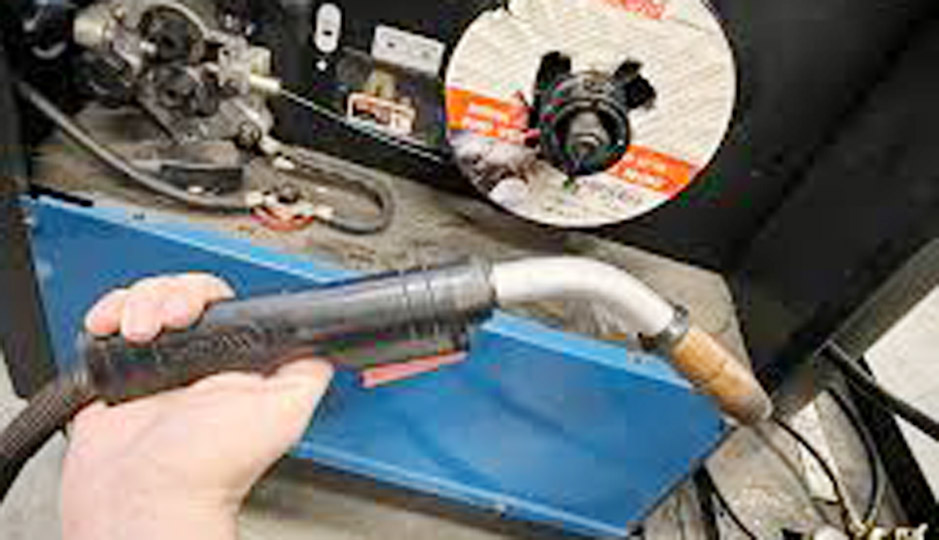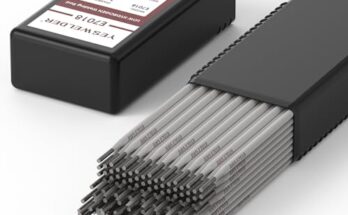When I first attempted MIG welding aluminum without a spool gun, I wasn’t entirely sure what I was getting into. I knew aluminum was a tricky metal to work with, and most resources insisted that a spool gun was essential.
I wanted to explore alternatives and prove that it could be done with the right approach, preparation, and equipment.
If you’re in a similar position—curious about whether you can successfully MIG weld aluminum without a spool gun—let me reassure you, it’s possible.
While spool guns are often recommended because they make the process easier, you can still achieve strong, high-quality welds without one if you follow the correct techniques and use the right tools.

Image by reddit
Here’s everything I’ve learned through trial and error about MIG welding aluminum without a spool gun. Whether you’re tackling a small DIY project or experimenting in your garage, this guide will help you succeed.
Why MIG Welding Aluminum Without a Spool Gun is Challenging
Aluminum behaves very differently from steel and other metals when it comes to welding. It’s lightweight, corrosion-resistant, and conducts heat exceptionally well, but these same qualities can make welding it a challenge.
Without a spool gun, feeding soft aluminum wire through a standard MIG setup can lead to tangling, inconsistent wire feeding, and weld defects. Spool guns are designed to minimize these issues by keeping the wire close to the welding torch, reducing the chances of feeding problems.
However, with some adjustments to your setup and technique, you can achieve comparable results without investing in a spool gun.
Tools and Materials You’ll Need
Before starting, gather the necessary tools and materials to set yourself up for success. Here’s a handy checklist:
| Item | Purpose |
|---|---|
| MIG Welder | A machine with enough power for aluminum welding. |
| Push-Pull System | Helps feed aluminum wire smoothly (optional but useful). |
| Aluminum Wire (ER4043 or ER5356) | The welding wire specifically for aluminum. |
| Argon Gas | Pure argon is ideal for shielding aluminum welds. |
| Teflon Liner | Reduces friction in the wire feed system. |
| Contact Tips | Oversized tips prevent wire jamming. |
| Wire Brush (Stainless Steel) | For cleaning the aluminum surface. |
| Protective Gear | Welding gloves, helmet, and jacket for safety. |
Preparing for MIG Welding Aluminum Without a Spool Gun
Proper preparation is critical when welding aluminum without a spool gun. Skipping these steps can lead to poor weld quality or frustration during the process.
Clean the Aluminum Surface Thoroughly
Aluminum forms a layer of oxide on its surface that melts at a much higher temperature than the aluminum itself. This oxide layer can cause contamination if not removed. Use a stainless steel wire brush to scrub the surface until it’s shiny and clean.
Use a Teflon Liner
In a standard MIG welding setup, a steel liner creates too much friction for soft aluminum wire, causing it to bird-nest or tangle. Replacing the liner with a Teflon one helps the wire feed smoothly through the machine.
Choose the Right Wire Diameter
Aluminum wire is softer than steel, so it’s best to use a slightly larger diameter, like 0.035 inches, to reduce feeding issues.
Adjust the Drive Roll Tension
Aluminum wire is more delicate, so reduce the tension on the drive rolls to prevent crushing or deforming the wire. Using U-groove drive rolls designed for aluminum can also help.
Techniques for MIG Welding Aluminum Without a Spool Gun
Set the Correct Parameters
Aluminum requires higher amperage and faster wire feed speeds than steel. Refer to your welder’s settings chart for aluminum and make adjustments accordingly. Start with a higher voltage and test on scrap pieces to fine-tune your setup.
Maintain a Push Angle
Always push the torch away from the weld pool rather than pulling it. Pushing ensures better shielding gas coverage and reduces contamination.
Work Quickly
Aluminum’s high thermal conductivity means it heats up rapidly. You’ll need to work quickly to avoid burning through the material, especially if it’s thin.
Avoid Excessive Heat
Heat management is crucial when welding aluminum. Too much heat can cause warping or burn-through, while too little can result in poor penetration.
Use Shorter Welds
To prevent overheating, weld in short bursts or stitches. Allow the material to cool slightly between passes.
Advantages and Disadvantages of Welding Aluminum Without a Spool Gun
While it’s entirely possible to weld aluminum without a spool gun, there are some pros and cons to consider:
| Advantages | Disadvantages |
|---|---|
| More cost-effective than buying a spool gun. | Increased risk of wire feeding issues. |
| Works with a standard MIG welder setup. | Requires more adjustments and preparation. |
| Ideal for small or occasional projects. | Not as convenient for large-scale welding. |
Common Issues and How to Solve Them
Welding aluminum without a spool gun can lead to some challenges, but here are solutions to common problems:
Bird-Nesting
Problem: The wire tangles inside the drive rolls.
Solution: Use a Teflon liner, reduce drive roll tension, and ensure the wire is properly aligned.
Burn-Through
Problem: Excessive heat melts through the aluminum.
Solution: Lower the voltage or amperage and work in shorter welds.
Porosity
Problem: Welds have holes or bubbles.
Solution: Check gas flow rate (20-30 CFH for argon) and ensure the surface is clean.
Poor Penetration
Problem: Welds lack strength and depth.
Solution: Increase amperage or adjust the wire feed speed for better penetration.
Practical Applications of MIG Welding Aluminum Without a Spool Gun
Without a spool gun, MIG welding aluminum is still suitable for many applications, including:
- DIY Repairs: Fixing aluminum tools, furniture, or small components.
- Automotive Work: Repairing aluminum parts in cars or motorcycles.
- Light Fabrication: Building small aluminum structures or frames.
However, for heavy-duty or industrial projects, investing in a spool gun or push-pull system might be worth considering.
Tips for Success
Here are some tips to improve your results when welding aluminum without a spool gun:
- Practice on Scrap Metal: Experiment with different settings and techniques before starting your project.
- Inspect the Wire Feed: Regularly check for kinks or tangles in the wire.
- Optimize Gas Flow: Too little or too much gas can cause weld defects. Aim for a steady flow.
- Be Patient: Aluminum welding can be frustrating at first, but persistence pays off.
Conclusion
MIG welding aluminum without a spool gun is entirely possible, but it does require extra preparation and attention to detail. By understanding aluminum’s unique properties, choosing the right tools, and following the techniques outlined here, you can achieve high-quality welds without investing in specialized equipment.
When I look back on my own experiences, I realize how much I’ve learned through trial and error. Whether you’re repairing a broken aluminum part or working on a creative project, this method can save you time and money while still delivering professional results.
The key to success lies in preparation, patience, and practice. Don’t be discouraged if your first few attempts aren’t perfect—welding aluminum is a skill that improves with time.
FAQs
Can I weld aluminum without a spool gun?
Yes, it’s possible to MIG weld aluminum without a spool gun by using proper preparation and techniques.
What type of gas is best for MIG welding aluminum?
Pure argon gas is ideal for shielding aluminum welds.
What wire should I use for welding aluminum?
ER4043 or ER5356 aluminum wire is commonly used for MIG welding.
How do I prevent bird-nesting when welding aluminum?
Use a Teflon liner, reduce drive roll tension, and ensure proper alignment of the wire.
Is a spool gun worth investing in for aluminum welding?
A spool gun makes the process easier and more efficient, especially for frequent or large-scale projects.
